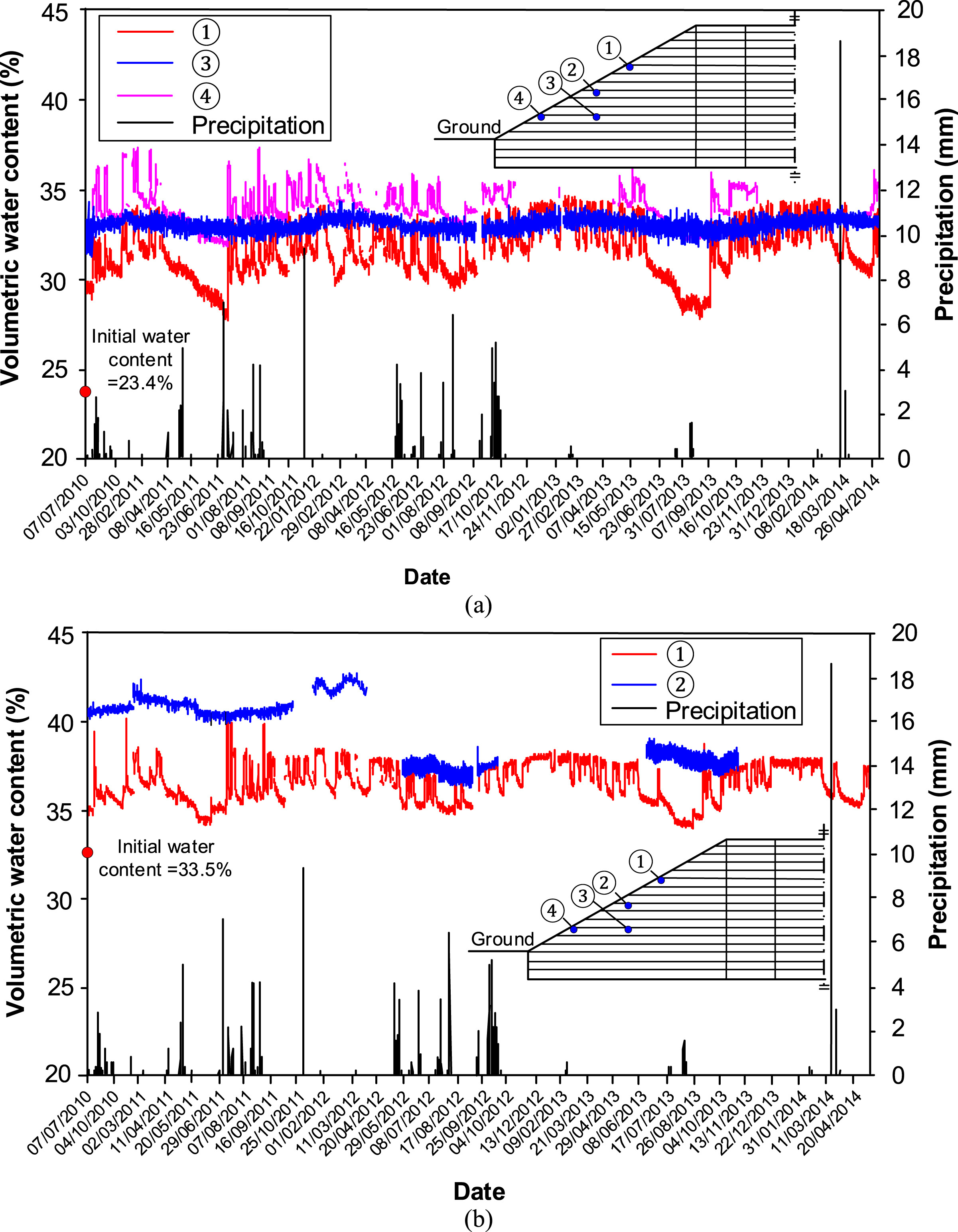JRMGE / Vol 14 / Issue 1
Soil–atmosphere interaction in earth structures
Yujun Cui
Show More
Laboratoire Navier, Ecole des Ponts ParisTech, France
2022, 14(1): 35-49. doi:10.1016/j.jrmge.2021.11.004
Received: 2021-09-21 / Revised: 2021-10-18 / Accepted: 2021-11-21 / Available online: 2021-12-10
2022, 14(1): 35-49.
doi:10.1016/j.jrmge.2021.11.004
Received: 2021-09-21
Revised: 2021-10-18
Accepted: 2021-11-21
Available online: 2021-12-10
The soil–atmosphere interaction was investigated through laboratory testing, field monitoring and numerical monitoring. In the laboratory, the soil water evaporation mechanisms were studied using an environmental chamber equipped with a large number of sensors for controlling both the air parameters and soil parameters. Both sand and clay were considered. In case of sand, a dry layer could be formed during evaporation in the near surface zone where the suction corresponded to the residual volumetric water content. The evaporative surface was situated at a depth where the soil temperature was the lowest. In case of clay, soil cracking occurred, changing the evaporative surface from one-dimensional to three-dimensional nature. The suctionbased evaporation model was adapted to take these phenomena into account by adopting a function of dry layer evolution in the case of sand and by adopting a surface crack ratio and a retative humidity ratio in the case of clay. In the field, the volumetric water content, and the suction as well as the runoff were monitored for an embankment constructed with lime/cement treated soils. It appeared that using precipitation data only did not allow a correct description of the variations of volumetric water content and suction inside the soils, the consideration of water evaporation being essential. It was possible to use a correlation between precipiration and runoff. The hydraulic conductivity was found to be a key parameter controlling the variations of volumetric water content and suction. For the numerical modelling, a fully coupled thermohydraulic model was developed, allowing analyzing the changes in temperature, volumetric water content and suction of soil, with the upper boundary conditions at the interface between soil and atmosphere determined using meteorological data. Comparison between simulations and measurements showed the performance of such numerical approach.
Keywords: Environmental chamber, Soil water evaporation, Suction-based evaporation model, Embankment, Field monitoring, Numerical modeling
Article Data
Author(s) Information
Prof. Yu-Jun Cui
yujun.cui@enpc.fr

Yu-Jun Cui obtained his BSc degree in Civil Engineering from Tongji University, China, in 1984, his Master degree in Mechanics applied to Constructions from Ecole des Ponts ParisTech (ENPC), France, in 1989 and his PhD in Unsaturated Soil Mechanics in 1993, also from Ecole des Ponts ParisTech (ENPC). He was employed by ENPC immediately after his PhD as an assistant researcher in the Laboratory of Soil Mechanics (CERMES) now becoming Géotechnique Group of Laboratoire Navier. He passed his Habilitation to Direct Research in Civil Engineering at University of Marne La Vallée, France, in 2000, and obtained the position of professor of ENPC in 2005. He has been Head of Master MSROE (Mécanique des Sols, des Roches et des Ouvrages dans leur Environnement) since 2004. His research interests cover unsaturated soil mechanics, laboratory testing, constitutive modelling, environmental geotechnics, railway geotechnics, nuclear waste disposal, lime/cement stabilized soils, soil-vegetation-atmosphere interaction, compaction of agricultural soils, etc.

